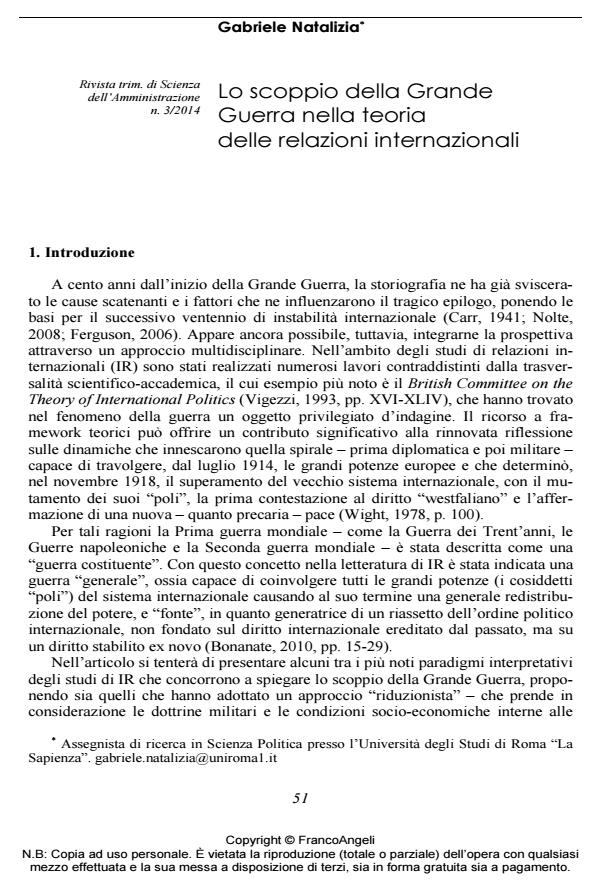The Outbreak of the Great War in the Theory of International Relations
Journal title RIVISTA TRIMESTRALE DI SCIENZA DELL’AMMINISTRAZIONE
Author/s Gabriele Natalizia
Publishing Year 2014 Issue 2014/3
Language Italian Pages 13 P. 51-63 File size 794 KB
DOI 10.3280/SA2014-003004
DOI is like a bar code for intellectual property: to have more infomation
click here
Below, you can see the article first page
If you want to buy this article in PDF format, you can do it, following the instructions to buy download credits

FrancoAngeli is member of Publishers International Linking Association, Inc (PILA), a not-for-profit association which run the CrossRef service enabling links to and from online scholarly content.
On the centenary of the outbreak of the Great War can a contribution still be made to the scientific debate on this theme? The aim of the author is to introduce the main interpretations of the causes of the conflict advanced by the leading scholars of International Relations, adding a brief historical verification. The choice was to restrict the scope of the survey to the interpretive paradigms that placed at the core of the analysis the so-called "security dilemma", that weighed on the relations among the Great Powers of Europe in the phase before the Sarajevo assassination. The progressive deterioration of this dynamic has been explained either by a "reductionist" approach - tying it to the affirmation of the offensive military doctrines and to the influence of socio-economic factors - or with a - system level theory - emphasizing the interaction with the formation process of alliances.
Keywords: Security dilemma, military strategy, alliances.
Gabriele Natalizia, Lo scoppio della Grande Guerra nella teoria delle relazioni internazionali in "RIVISTA TRIMESTRALE DI SCIENZA DELL’AMMINISTRAZIONE" 3/2014, pp 51-63, DOI: 10.3280/SA2014-003004